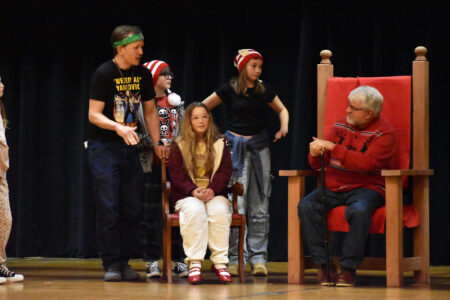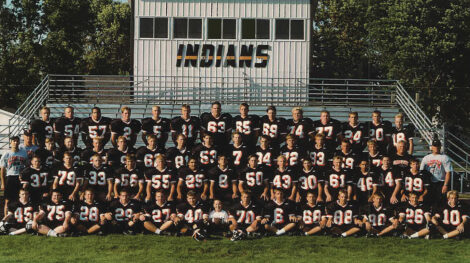Cloth dolls more than a toy, a piece of history
Labor Day is a good time to reflect on the history of workers in America. One of the most interesting periods came during the Great Depression with the Works Progress Administration, later called the Work Projects Administration, from 1935 to 1943. As part of President Franklin Delano Roosevelt’s New Deal, artists were employed to work on federally funded projects.
Some of these projects are pieces by great artists of the 20th century, like photographs by Dorothea Lange, sculptures by Augusta Savage, or murals by Grant Wood. Others, often collected as folk art today, were utilitarian items made by workers with little or no previous artistic training. These include the cloth dolls known as “WPA dolls.” They were made for schools or museum displays. Many had educational purposes, like the dolls dressed in historical or international costumes, or representing characters from stories and nursery rhymes. Some were for children’s play.
This doll with long blond braids and a pink dress sold for $354 at Apple Tree Auction Center. Listed as a “WPA Cloth Girl,” not a specific character or historical figure, she was probably made as a toy for a school or nursery. After all, as psychologist Jean Piaget said, play is the work of childhood.
* * *
Q: My father had a very old silk handkerchief that he said he got during World War II. It is approximately 9 by 9 inches, and he kept it in great condition. It has a picture of Jane Russell with a gun. After looking online, I saw she did many photos and posters with guns. Odd. But this one is a nude. Is it worth any money, and should I keep or sell it?
A: Jane Russell (1921-2011) made her first movie, “The Outlaw,” directed by Howard Hawkes and Howard Hughes, in 1943 when she was 19. She played Rio McDonald, the love interest of Billy the Kid. One of the film’s most famous images, used on the poster and in publicity materials, featured Russell lying in hay and holding a gun, wearing a low-cut blouse with her skirt hiked nearly to her hips. The provocative image made Russell an instant star and a favorite pin-up among World War II servicemen. It was frequently reproduced.
Handkerchiefs were a popular souvenir in World War II because they are small and lightweight. They usually had painted or printed images and were often meant to be displayed as a more durable alternative to pictures or prints on paper. Some soldiers painted their own, and some were mass-produced with printed pictures.
World War II-era handkerchiefs like yours are usually worth about $20 to $75, depending on size (larger ones are usually worth more), condition, and whether the design is printed or hand-painted (painted ones are usually more valuable). A close look may tell you whether yours is printed or painted. Painted pigments will have penetrated the cloth and may show brush strokes. Whether you keep or sell it is up to you. If you decide to sell it, collectors of pin-up art, vintage textiles, or World War II memorabilia may be interested.
* * *
TIP: Don’t store fabrics in plastic bags. Use a well-washed white pillowcase. Plastic holds moisture, and the fabrics should “breathe.”
* * *
Kovels answers readers’ questions sent to the column. Send a letter with one question describing the size, material (glass, pottery) and what you know about the item. Include only two pictures: the object and a close-up of any marks or damage. Be sure your name and return address are included. By sending a question, you give full permission for use in any Kovel product. Names, addresses or email addresses will not be published. We do not guarantee the return of photographs, but if a stamped envelope is included, we will try. Questions that are answered will appear in Kovels Publications. Write to Kovels, (Name of this newspaper), King Features Syndicate, 300 W. 57th Street, 41st Floor, New York, NY 10019, or email us at collectorsgallery@kovels.com.
* * *
CURRENT PRICES
Current prices are recorded from antiques shows, flea markets, sales and auctions throughout the United States. Prices vary in different locations because of local economic conditions.
Doorstop, Charleston dancers, man and woman, painted, red dress, black suit, red base, cast iron, marked, Ann Fish, Hubley, c. 1930, 8 1/2 inches, $60.
Furniture, chair, Robsjohn-Gibbings, blue green upholstery, tapered legs, open arms, mid-20th century, 32 inches, $160.
Print, Sanchez, Emilio, Sunday Afternoon, stylized figures, Jamaican women, white dresses and hats, lithograph, signed, numbered, 1958, 15 x 12 inches, $275.
Tool, chest, machinist’s, lift lid, fold down front panel, drawers, top handle, H. Gerstner & Sons, 20 x 14 inches, $285.
Clothing, scarf, Passementerie, illustrated tassels and cords, multicolor, ivory ground, fuchsia border, silk twill, Francoise Faconnet, Hermes, 34 inches, $290.





